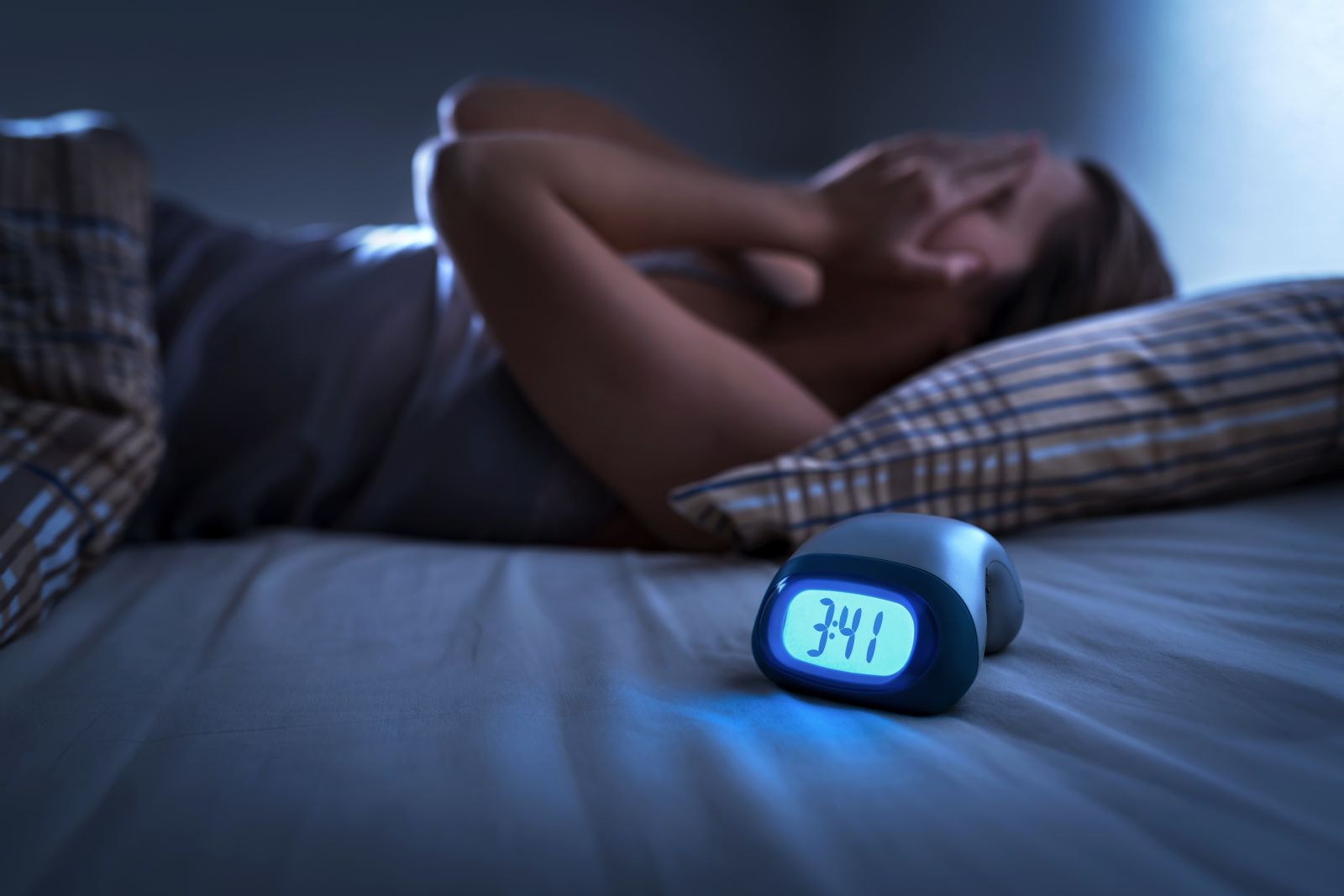|
According to the American Diabetes Association, more than 29 million Americans—roughly 9.3 percent of the population—had been diagnosed with diabetes in 2012. Each year, about 1.4 million more people are diagnosed, and in 2010 the disease was the seventh leading cause of death in the United States. The most common form is Type 2 diabetes, when the body doesn't use insulin properly and excess glucose builds up in the blood. Common symptoms include extreme thirst or hunger, frequent urination, intense fatigue, slow-healing cuts or bruises, and tingling, pain or numbness in the hands and feet. As the disease progresses, it can lead to more serious and even life-threatening complications, from high blood pressure and kidney disease to stroke. The good news though, is diabetes doesn't have to be a permanent diagnosis. "People diagnosed with early type 2 diabetes can reverse the condition as they progress to a combined plan of supplements, exercise and dietary changes," says Dr. John Furlong, Assistant Professor at the University of Bridgeport College of Naturopathic Medicine. For many, a diabetes diagnosis can be the catalyst to start exercising and eating healthier. Real Stories of Staying Fit with DiabetesAt SparkPeople, hundreds of members with diabetes use our message boards to share support, tips and motivation. We hope their stories provide information and inspiration for those facing a new diagnosis. "I've lost a little weight, boosted my energy and generally felt great. I'd say the diabetes was a timely wake up call at 50." Vidya, VIDYASURY I was diagnosed with Type 2 diabetes in February 2013. Obviously, I was shocked and upset. I already led a reasonably healthy lifestyle, and was told that the diabetes was probably because it ran in my father's side of the family. I went through a brief phase of denial, but thanks to my family's support, got over it in a couple of days and made a plan. I changed my diet and lifestyle overnight, determined to get my blood sugar levels in control within the month—and I did. Today, I am doing okay with brief fluctuations, but I'm able to get [those fluctuations] back on track quickly. My doctor, who is considered one of the best endocrinologists/diabetologists around, gave me oral medication, but no specific tips except that I should avoid fried and packaged foods and get moderate exercise. I was already a regular reader of SparkPeople and naturally turned to the diabetes section, where I found a lot of tips I could incorporate in my routine. I'm a vegetarian and enjoy cooking. My main diet changes were to minimize rice and wheat and to focus on salads, sprouts, fruits and healthy carbs. I still wake up and have my cup of coffee— I like to believe my system is used to it. For breakfast, I make overnight oats with nuts, fruit and yogurt. Then, I take my medication and half an hour later, have breakfast. I go to the gym in the morning for a 45-minute workout. Lunch is at 1 p.m., so around 11:30 I have another cup of coffee and a small snack, which could be a couple of homemade cookies or crunchy Indian flatbread. Lunch is usually roti, a bowl of vegetables, salad and yogurt. At 4 p.m., I have a cup of tea with some homemade snack. At 5:30, I go out for a brisk walk. At 8 p.m. I have dinner, which is a repeat of lunch or a one-dish meal with lots of veggies and salad. I drink lots of water throughout the day to stay hydrated. Since I work from home, I make a meal plan for the week on Sunday night so I can prep in advance. I avoid packaged food as much possible. Now I'm determined to stay healthy and show my diabetes who's boss! "In essence, I had to change my lifestyle, and I now realize it must be permanent." Lee, LVNV5030 I'm an 85-year-old male. About five years ago, I was told by my doctor to either lose some weight or lose my feet. I didn't need to be told twice. The highest I recall weighing in his office was 243, but soon thereafter I was pushing 250. Initially, I was put on 850 milligrams of Metformin, one per day. Later, after I started getting my blood sugar under control, the dosage was reduced to 500 milligrams per day. For the past couple of years, I've been taking no meds—simply keeping the blood sugar and A1C under control via my diet. I started researching the standard American diet and its effects on our bodies. I gravitated toward a low-carb, high-protein diet and have pretty much stuck with it. Way back then, the pounds melted away fairly quickly: A pound or two per week was not unusual. My first plateau was at 210 and then again at 190. I found SparkPeople and have been recording my intake ever since. Each pound gets tougher to take off, and the diet requirements become more strict. It took me about six months to effectively break through that 190 plateau. Currently I'm bouncing around between 180 and 185. I'd like to lose about five more pounds to take me down to 175. I had to give up many things I love: sugar, honey, grains, rice, pasta and anything made from flour. To get below 180, I'm beginning to cut back on legumes and nuts. My doctor told me to increase my protein intake. Fortunately, I like to cook and am fit enough to take care of myself. My diet is generally 50 percent fat, 30 percent protein and 20 percent carbs. Five years ago, I could barely make it 20 yards with the aid of a cane. Beyond that, I needed a walker. At an airport, I needed a wheelchair. To shop, I had to use one of those electric carts. Now it's a different story. For the past year, I've been doing about an hour of exercise every morning, a mixture of yoga, Pilates and dumbbells using online workout videos, including SparkPeople TV. Almost every night, I take the dog for a half-mile walk. It took me about six months to work my way up to a half mile from 50 or 100 yards. When I go grocery shopping, to me most of the store is redundant. So are almost all fast food joints. "Everything changed when my wife started with SparkPeople and I decided to join with her." Robert, BOBP56 I knew for years that I had type 2 diabetes, but didn’t see a doctor about it until I got diagnosed while in the hospital for a different illness five years ago. My doctor mentioned eating right and exercising, but the emphasis was on checkups and medications to control the blood sugar and other issues. For several years, I didn’t do much. I thought I was doing all I could to "eat right" by not eating any processed sugars, or any foods that were obviously sugar-filled. She created our diet and totally did away with all starch-based carbs, like potatoes, rice and noodles, and switched what little bread we ate to whole-grain. We ate lots of salads, lean meat and veggies with some fruit. My blood sugar leveled off and became normal. My doctor was blown away by my levels. If they continue to lower, I hope to be able to wean off the insulin pills completely. I now go to the gym four times a week for one to one and half hours. I usually do an hour of aerobics (treadmill or elliptical) and half an hour of machine strength training. On rest days, I do little things like short walks. Breakfast is usually two eggs with one piece of whole-grain toast (no butter) on gym days, and one cup of Special K with a half cup of skim milk on work days. Lunch is salad with light ranch dressing and a piece of fruit. For dinner, I have chicken, turkey or fish with green beans and one other veggie. Most evenings, I have an apple for a snack. "Since changing my lifestyle, I have lost more than 50 pounds, am off insulin and have a normal blood glucose reading." Jack, WAXMANJACK About six years ago, I was diagnosed with type 2 diabetes and put on long-acting insulin. I didn't worry about it at first, then a year ago my sugar level was over 500. That's when I gave up all sugar and started researching on my own. A year later, my glucose levels were about 150 to 165 with daily insulin. At that time, my wife got sick and was found to have a glucose level way over 500. We decided to try the ketogenic diet. I eased into it at first, limiting my carb intake to less than 50, then dropped it down to less than 25 per day. I then began intermittent fasting, allowing myself to only eat during an eight-hour period with at least 16 hours of fasting each day. During that time, my breakfast is usually coffee with half-and-half. Occasionally if I'm hungry I have an egg, but lunch is usually my first meal around 1 p.m. and dinner is my last meal around 6 p.m.. Dinner is usually a portion of meat, a large salad or cottage cheese, green beans, cabbage or summer squash and mushrooms, although once in awhile I'll eat a small potato or a little pasta. I have a target of 35 to 45 grams of carbohydrates per day. My only steadfast rules at home are no flour or sugar, and that includes foods made with those items. On special occasions and family functions, I go with the flow and then go right back to what I was doing the day before. After changing to this new lifestyle, I have lost 43 pounds, dropped my A1C by 2.4 points in less than 90 days. Today, I am off insulin and have a normal blood glucose reading (mid 80s to 90s) most mornings. Also, after being on Nexium for nine years after being diagnosed with Barrett's Syndrome, I have stopped taking that medication and the acid reflux I endured for years is pretty much gone. I haven't been able to exercise much, so everything I have accomplished has been by diet change only. Having lost over 50 pounds, I am walking much better, have recently joined a gym and will be starting to get that much-needed exercise. SparkPeople has helped me a lot. I use the Nutrition Tracker to keep track of my carbohydrate, calorie, fiber and fat levels. Sometimes I even use it to plan my meals. I'm looking forward to starting to use the Fitness Tracker, as I have just joined my local gym. If someone had told me a year ago that I would be exercising, I would have have laughed at them. I truly appreciate the help and the inspiration I have found here. "SparkPeople has been my salvation from diabetes." Missy, MISSMOLLYSOUTH All my life, I struggled with reactive hypoglycemia. Then, in 2014, I became borderline diabetic. My doctor talked to me about losing weight and exercising. I didn't make any real effort to follow her advice. In January of 2015, my doctor told me I was diabetic. She wanted me to begin medication. I asked her to let me try to lose weight on my own first. She gave me three months to show her some changes. I researched several diet options and was about to order a popular diet food program when I saw an ad for SparkPeople. Instead of placing that order, I began reading Spark articles. When I read the introductory message from the founder, I knew I had found my program. When I started in February of 2015, I weighed 246 pounds with a goal of losing 100 pounds. Since then, I have religiously tracked my nutrition and walked every day, working up to 12,000 steps. By March of 2016, I was at my goal and my blood sugar was in the normal range. I am now maintaining at 145 pounds with normal blood levels. I used to be a diet soda junkie. Now, I drink purified water or unsweetened tea. For breakfast, I usually have Greek vanilla yogurt with an ounce of walnuts, a teaspoon of raisins and a sprinkle of cinnamon, along with a banana. At lunch, I usually have a sandwich or tortilla with deli ham or pimento cheese, along with a large apple. Or, I'll make a dip for the apple with Greek yogurt and a tablespoon of almond butter. Snacks are usually graham crackers with almond butter, a piece of fruit, some nuts or popcorn. For dinner, I usually prepare a meal my family will enjoy, then measure my entrees according to recommended portion sizes and fill up on unlimited veggies. I do eat out often, and try to watch calories at restaurants by researching menus beforehand or sticking with choices that I know will be healthier. I've found that the "light options" at a lot of restaurants are not always the best choices. I do have occasional desserts or treats, but I include the calories in my daily count. If I have dessert at home, I take steps to make a lighter version. I have severe osteoarthritis, which limits me to mostly walking. Most of the time, I get my 12,000 steps by walking in place while watching TV or reading on my Kindle. Every time I have a phone call, I walk in place while talking. If the weather is comfortable, I walk outside. The key is to keep moving. I'm 51 and I have more energy and feel better than I have in years. I track nutrition and read Spark articles every day. I never want to go back to that unhealthy diabetic condition again! "SparkPeople gives you resources like healthy eating and exercise videos, websites and emails to keep you motivated, and a variety of dietary choices so you don’t get bored." Rena, RROCKWELL13 A couple years ago, I was having lot of headaches and near-blackouts. After many tests and an MRI, we had no answers—until I found a dietician who told me I had low blood sugar. I was diagnosed as pre-diabetic. My doctor wanted to put me on medication, but I wanted to first try a healthier diet before going to a prescription. After getting the test results, I went onto SparkPeople and found the diabetic menu plan. I've now lost over 30 pounds due to gallbladder and stomach issues, but I'm still working on my weight loss. After losing the weight, I no longer have the low blood sugar issues. My current goal is to maintain this weight or lose more so I don't become diabetic. Each day, I typically eat three meals and two snacks with the recommended carbs, fat, protein and calorie ranges. For exercise, I was told to get 10,000 steps in a day. I use my FitBit to keeps track of that, and it syncs with my SparkPeople diet and fitness goals. Five to seven days a week, I either ride my bike, walk or water walk. The one to two pounds a week is coming off and I feel great! 8 Healthy Living Tips for Diabetics
|
Popular Entries
More From SparkPeople
|







.png)









.png)
